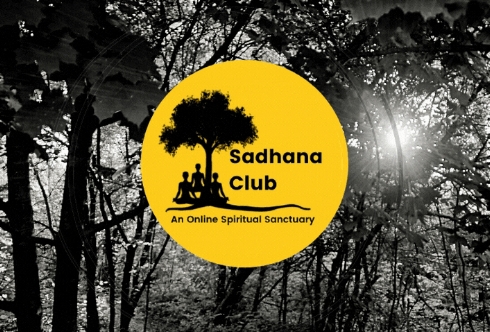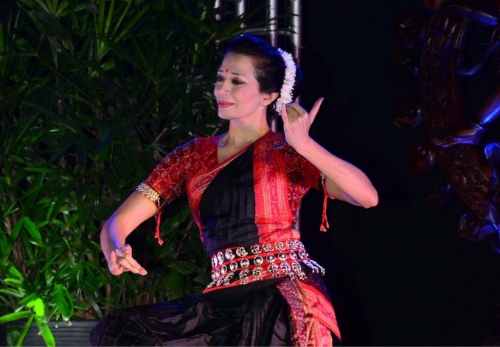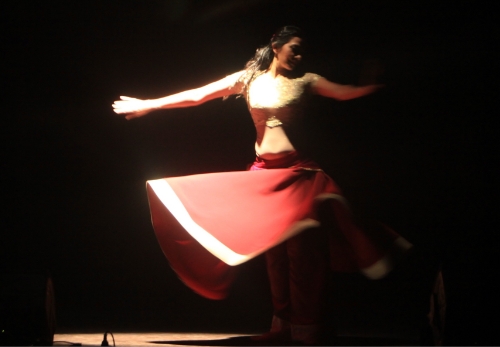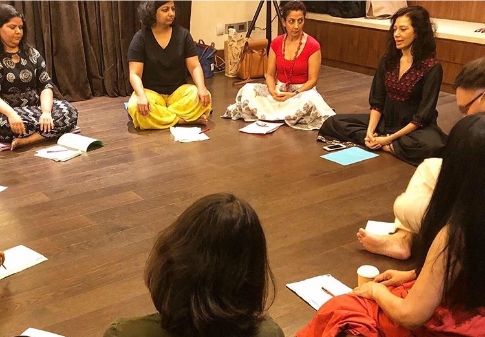Odissi Dance
The Odissi Dances originate from Eastern part of India, Orissa. It is one of the eight classical dance forms of India and the oldest surviving dance form on the basis of archeological evidences. The classic treatise of Indian dance, Natya Shastra, refers to it as Odra – Magadhi. 1st century BCE bas – releifs in the hills of Udaygiri, Bhubaneshwar, testify to its antiquity.
More than 2000 years old, these dances have a long yet broken history. Odissi dances were held in high esteem until the 17th C., and patronized by nobilities and royal families. It almost went into extinction during the colonial rule (British Raj) with their Anti –Nautch status, but after India gaining its independence, a movement towards the reconstruction of these dances started, once again placing classical dance forms onto an important and prestigious platform of Indian Cultural Arts.
The process of reconstruction of the Odissi Dance work involved the careful study of ancient books and scriptures and a close examination of dance posses represented in bas-relief in the various temples of Orissa.
Odissi dances are intricate and feminine temple dances originating from the sacred temples of Konark and Bhubaneshwar.It is particularly distinguished from other classical Indian dance forms by the importance it places upon the tribhangi(3 part break, the independent movement of head, chest and pelvis) and upon the basic square stance known as chauka. The themes of classical Odissi dances are devotion to Lord Jagganath, relating stories of Krishna, references from the GeetGovinda and Shiva’s Tandava.
This classical dance form of Orissa holds delicate beauty and the celebration of essential feminine grace. These dances are a reverence to the Gods and Goddesses of Indian Mythology.
Awards & Honors
As an exponent of Sacred Dance

Speaker at 3rd World Parliament on Spirituality
The World United 2020

Speaker at The Bhakti Yoga Summit
Cayman Islands 2020

Rotary Club Inner Wheel
Mumbai 2020

Access Life - Artists For A Cause
Mumbai 2019

12th Global Festival of Spiritual Sciences
Bangalore 2019

11th Global Festival of Spiritual Sciences
Bangalore 2018

Elephanta Festival
Mumbai 2018

Tapi Festival
Surat 2018

Delhi International Arts Festival
2016

ISHMA, Spiritual wellness & Leadership Awards
Mumbai 2015

21st Lion's Gold Awards
Mumbai 2008
25+
Years Of Experience
500+
Workshops
200+
Shows
Performances & Workshops
With prestigious organizations

Round Glass Company
USA 2021

Wellbeing Project
Austria
USA 2019

Round Glass Wellbeing
Atmantan 2019

YPO
Bangalore, Mumbai 2017-2018

FICCI
Delhi, Jaipur, Pune, Ahmedabad
2017-2019

Wajid Ali Shah Festival
Lucknow 2017

IAPAR - International Theatre Festival
Pune 2016

Aurora Borealis Global Convention
Norway, Svalbard 2016

Jahan - e- Khusrau World Sufi Festival
Delhi, Jaipur, Lucknow 2012

Sadhana Club
Cayman Islands 2020

Anahata Retreats
Goa, Atmantan 2017-2019



